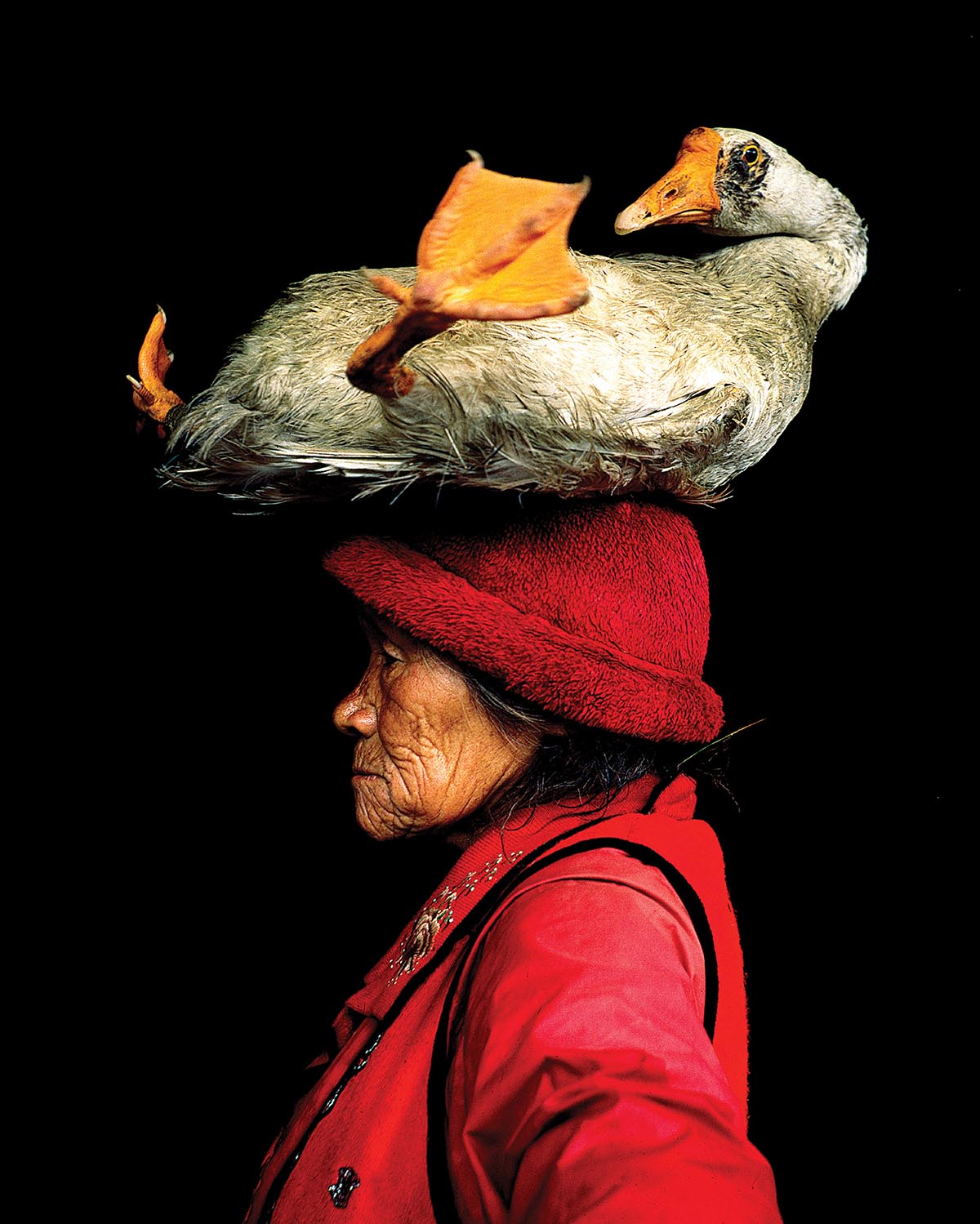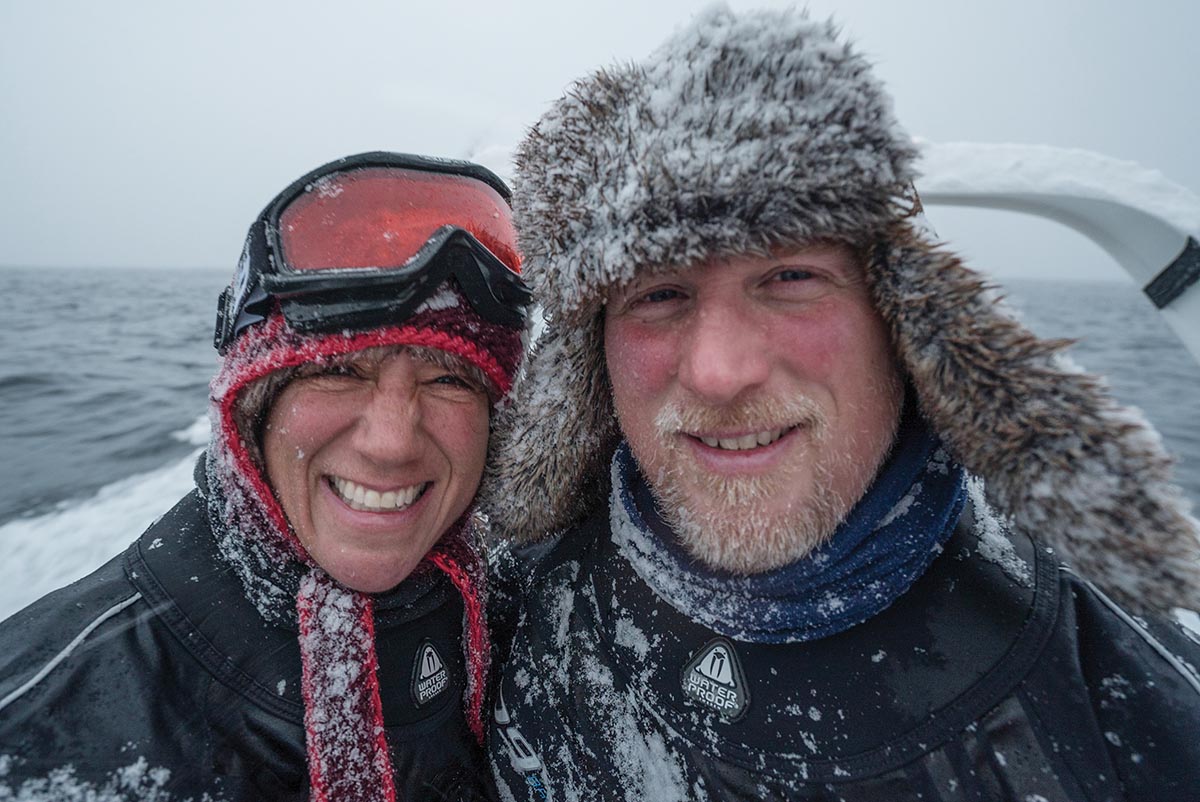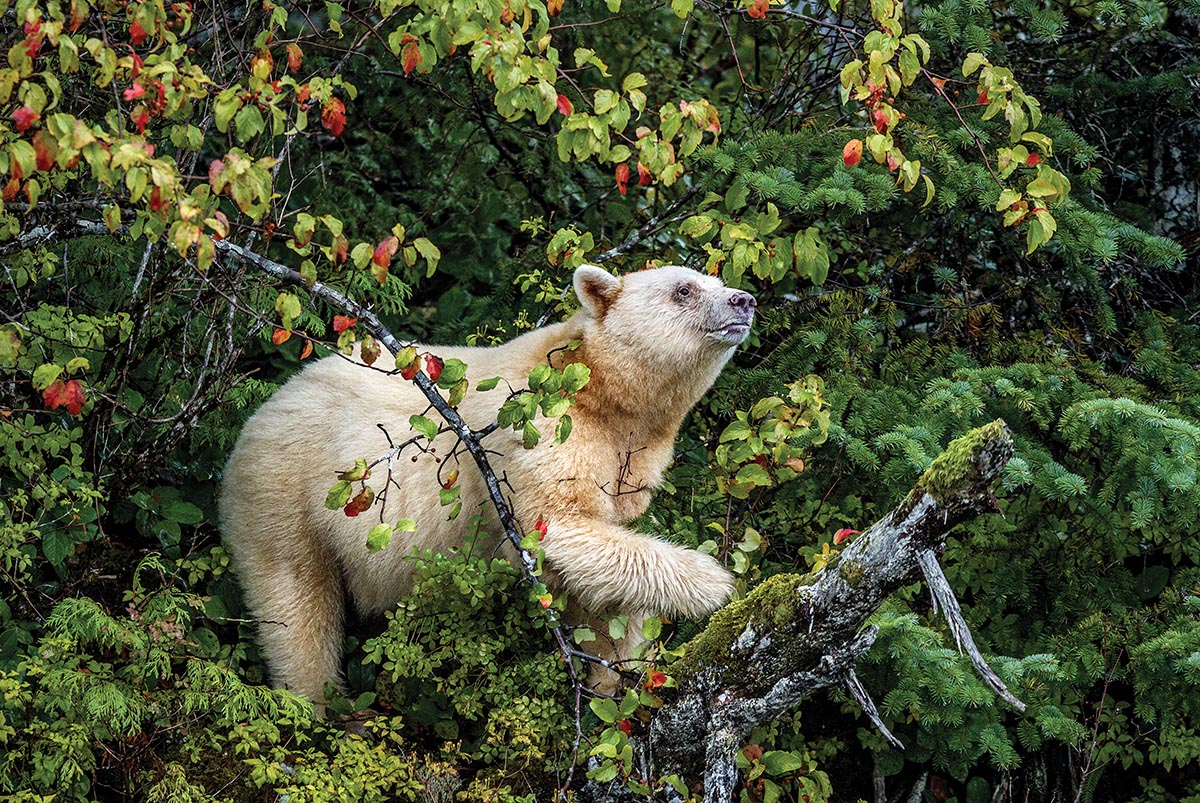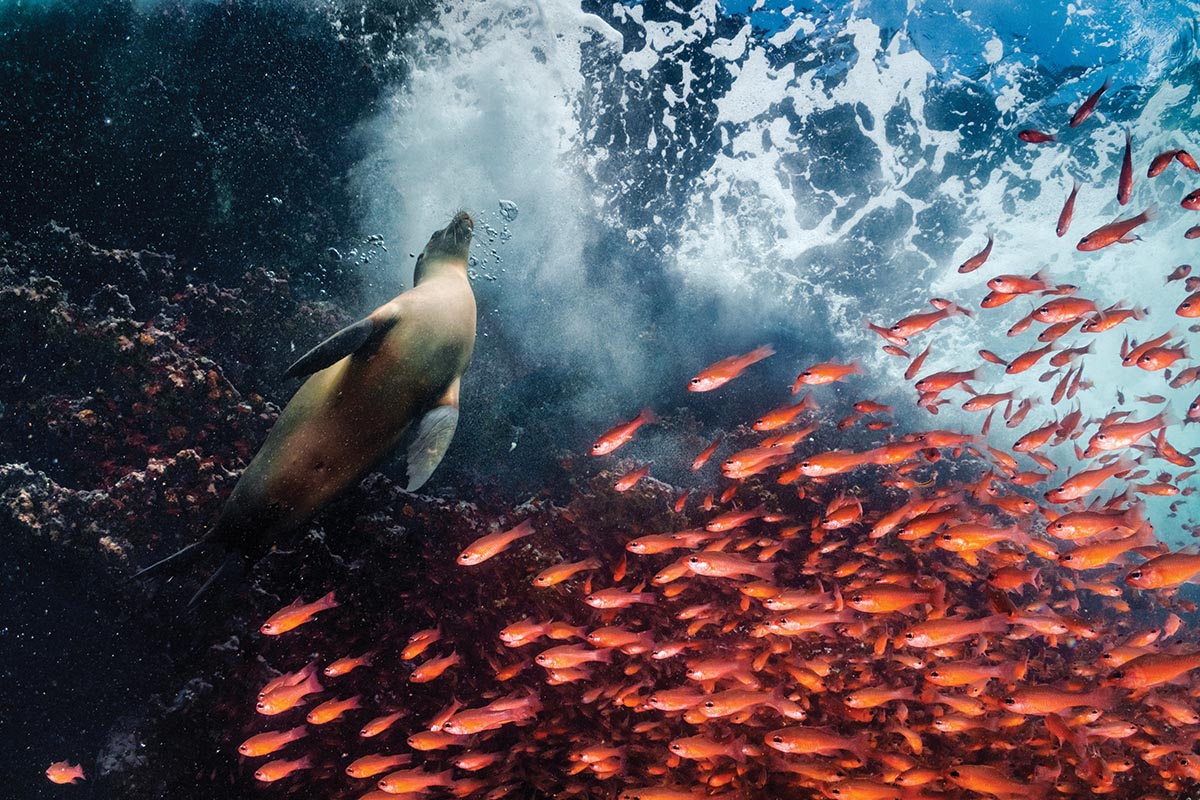Guardians of the Deep
Cristina Mittermeier and Paul Nicklen are the dynamic duo of conservation photography.
• February 2024 issue

While the Caped Crusaders wore spandex to clean up the streets of Gotham City, the dynamic duo of Cristina “Mitty” Mittermeier and Paul Nicklen don wet and dry suits in their campaign to save the oceans of the world. Like the ships they use to reach remote locations, the battle is often pitched. Victory is far from assured.
Every frame they capture speaks to the heights and depths they go to for the planet and its inhabitants when they venture forth from their home on Canada’s Vancouver Island. This is most evident in the work they do for SeaLegacy, which they co-founded with Andy Mann in 2014 as a nonprofit that uses strategic communications and education to protect and rewild the ocean. Their expeditions to study hundreds of species around the globe have shown a clearer picture of the current state of the crisis above and below the rising sea levels.
They prefer to look for solutions rather than focus solely on problems. Both have scientific backgrounds. Nicklen was a marine and wildlife biologist for the Canadian government in the Northwest Territories after graduating from the University of Victoria in Canada with a degree in biology. Mittermeier started her career at Conservation International after graduating from ITESM University in Mexico with a degree in biochemical engineering in marine sciences.

Cristina ”Mitty“ Mittermeier and Paul Nicklen
PHOTOGRAPHY LOVES SCIENCE
In the 1970s while living in a small Arctic Inuit town, Nicklen’s mother started a phoography hobby and built a darkroom. The young Nicklen was able to borrow then keep her Pentax K1000 for his forays into the tundra on the long summer and short winter days. A collection of Jacques Cousteau books that he read before bedtime fueled his imagination and deepened his knowledge of the world beyond the Arctic.
During Nicklen’s second year at university, a diving class fused photography and science and with that came the realization that the camera could play a vital role in bridging the gap between life beneath the waves and humanity above it. But it would take a movie script-worthy experience to put him on a definitive track to the top of the photography and conservation worlds.
In 1994, armed with Tony Robbins’ book “Awaken the Giant Within,” Nicklen left his government research job and set out on a three-month solo soul-searching, goal-setting expedition into the unforgiving Canadian Barren Grounds, sharing the tundra with wolves and bears. By the end of it, he had clarified his focus and defined a path forward. One of the main goals was to become a National Geographic photographer. Thus began a six-year journey.

Mittermeier’s epiphany came when she saw how fellow Mexican wildlife photographer Patricio Robles Gil was using his images on behalf of conservation. After moving to Washington, D.C., she solidified what she had learned in photography classes at the Corcoran School of the Arts and Design, including extensive darkroom use. In 2005, she founded the International League of Conservation Photographers to provide a platform for photographers working on environmental issues and coined the now commonly used phrase “conservation photography.”
In 2007, fate would step in to bring the two together, and the world’s oceans would be the better for it. Mittermeier was invited to a breakfast meeting to join the National Geographic Image Collection. This was her first meeting at the famed magazine’s headquarters, and she recalls being nervous, surrounded by the who’s who of Nat Geo photographers and their editors. An empty seat was beside her, and Nicklen, who already was a famed contributor, was late. When he did show, the seat was his, and the chemistry between the two of them did the rest. They would soon become partners in both life and the conservation movement.
CAMERA AS CONSERVATION TOOL
Projects for National Geographic magazine and other major publications made it clear to both Mittermeier and Nicklen that more had to be done to get the word out about the crisis facing the 71 percent of the Earth’s surface that is covered by water. The Pacific Ocean blob of warm water that was first detected in 2013 was particularly devastating, causing ocean temperatures to rise and killing sea life and land animals that depend on the oceans for survival.

After finding polar bears that had starved to death in the high Arctic due to climate change, Nicklen felt the urgency to do more about the growing crisis. He asked Mittermeier if something could be developed from the model she had used to create ILCP to help scientists tell a more engaging story through the intersection of art, science, and conservation. This gave birth to the organization SeaLegacy and its use of visual storytelling through social media to reach millions of people. Special interest groups that were harming the planet now had a formidable new adversary.
SeaLegacy embraces “the six recovery wedges” developed in an international study led by professors Carlos Duarte and Susana Agusti of King Abdullah University of Science and Technology. This includes a roadmap of actions required for the planet’s marine life to recover to full abundance by 2050. The report identifies specific actions to be taken within the themes of protecting species, harvesting wisely, protecting spaces, restoring habitats, reducing pollution, and mitigating climate change. Reducing humanity’s carbon footprint, getting away from fossil fuels, and fully embracing clean energy are top priorities.
.jpg)
Nicklen and Mittermeier present the beauty of what humanity stands to lose through exhibitions printed by Toronto Image Works under the direction of famed fine art photographer Edward Burtynsky. In June and July, the C. Parker Gallery in Greenwich, Connecticut, presented “Double Exposure: Two Photographers, One Mission.” The exhibition featured more than 30 large-scale prints on Hahnemüehle paper, the largest being 60x90 inches, allowing patrons to visually immerse themselves in the stunning imagery before them.
These National Geographic Fellows and Sony Artisan of Imagery ambassadors have received the most prestigious awards in the photography and conservation fields, including most recently humanitarian awards at the Lucies. But they feel this is no time to rest on their laurels since far too much is at stake.
Mark Edward Harris is an award-winning photographer and writer based in Los Angeles.



